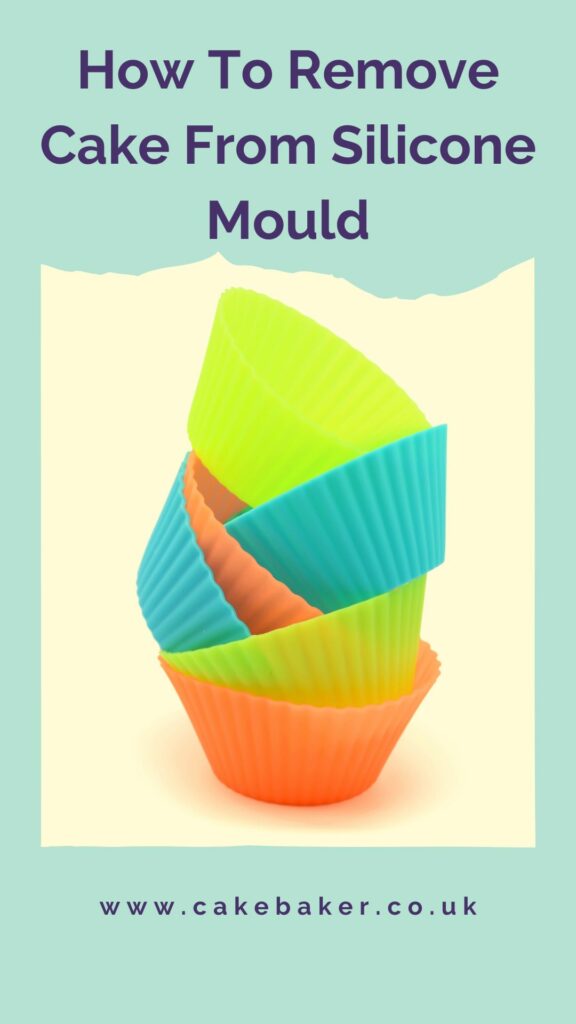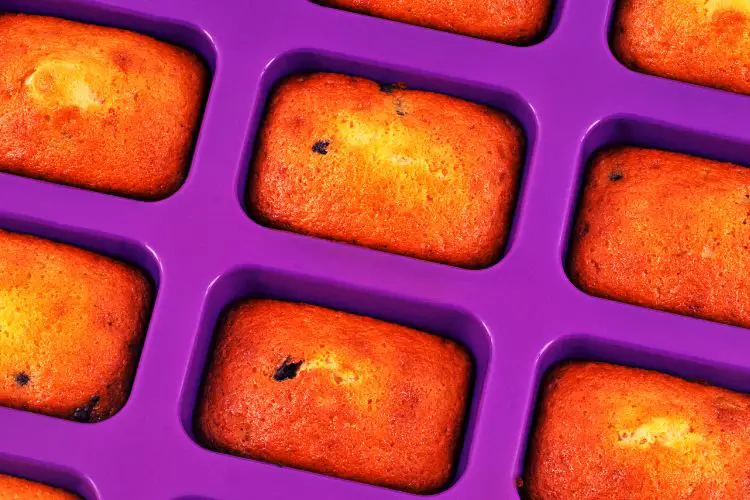A lot of chefs are now turning to silicone bakeware instead of some of the more traditional materials. While there are a lot of good reasons for this including affordability and being dishwasher safe, there are some notable downsides. Most obviously is that your cake might stick to the silicone mould and be incredibly difficult to get out.
So, if you want to avoid this, you’ve probably been wondering how to remove cake from a silicone mould. Let me be the first to tell you that it’s all about correct preparation.
In this guide, I’ll be walking you through how to successfully use a silicone mould for your next baking adventure. And I promise, it isn’t going to be the disaster you imagine it to be!

Why Use A Silicone Mould?
One of the main attractions of silicone moulds is that they’re super affordable. At a time when we’re all trying to watch our bank balance, this is a welcome change to forking out over the odds for metal bakeware.
What’s more, silicone moulds are much easier to store owing to how flexible they are. If you’re a keen baker, you probably are short on storage space; I know I am! Moreover, you get a choice of colours and shapes which is always nice.
Silicone moulds are much more versatile than their metal counterparts. You can use them in the microwave and they can be cleaned in the dishwasher; starting to sound like a good idea? But there’s one thing to consider…
What Are The Problems With Silicone Moulds?
While there are a lot of good points about silicone bakeware, one thing that you have to keep in mind is that many of them are not non-stick. They’re advertised as being non-stick but when it comes down to it, they’ll really let you down. This means that it can be a lot more difficult to get your cake out of the mould without damaging it.
How Do You Remove A Cake From A Silicone Mould?
Since so many people have problems with removing their cake from the silicone mould, it’s worth noting that the problem isn’t so much with the removal itself and more with how you prepare the mould before using it.
Silicone Mould Preparation
One of the most important things to keep in mind is that your mould needs to be immaculately clean. This is even more important if this isn’t the first time you’ll be using it as there might be debris and residue left over from last time which can lead to your cake sticking.
Be sure to wash the mould in very hot water and dish soap to get rid of any food and then dry it thoroughly. Any soap or water left behind could also interfere with its performance.
You’re now ready to start making your cake but if you want to be able to remove it easily and not have it stick then I’d suggest waiting to add the flour. You can mix all of the other ingredients together but hold off just for a while on adding the flour.
Next, you will need to apply a generous amount of vegetable oil to your silicone mould, ensuring that all areas are coated. The best way to do this is to apply it with your fingers as this will allow you to get the best coverage. If you find that you’ve added a little too much, just get rid of a bit using your hands.
That said, many people find that spray on vegetable oil is easier for this so if you have some, then it’s worth using.
You’ll also want to think about how you place the silicone mould into the oven as this too can affect how easily you’ll be able to remove the cake when it’s cooked. For example, if you’re using a very large mould, this will be floppy so you’ll need something underneath it, such as a metal baking sheet for stability.
The problem with this is that this will impact the temperature at the bottom of the cake so if you can make do without using anything underneath, then do so.
Once you’ve got everything ready, you can now fold the flour into your cake mix before putting the batter into your silicone mould. It’s important to make sure you add the batter evenly and try not to drag it over the surface as this may remove or upset the oil you added earlier.
Now you can simply bake your cake as you would when using any other type of cookware. Make sure that you do not open the oven door until you’re confident that the cake is cooked. Also keep in mind that, once we have removed the cake from the mould, the base will become the top so avoid using a browning feature if your oven has one.
Allowing The Cake To Cool
You should ensure that the cake is properly cooked before you try to remove it and one of the easiest ways to tell this is by looking at the edges. When the cake cooks, the edges will move slightly away from the edge of the mould, just like they would in a metal tin.
It is so important to allow your cake to cool completely before you even try to take it out of the mould. Not doing so is going to make life much more difficult as the cake will not be as firm and will be more likely to fall apart when you handle it. If you’re in a hurry, we have a guide on how to cool a cake fast.
Once the cake is cooled, you can take a knife and run this around the edge of the mould just to unstick any parts that have not naturally moved away. Keep in mind that the mould is delicate so choose a non sharp knife so as not to damage it.
Removing The Cake
It’s now time for that dreaded make or break moment but if you’ve followed all of the previous steps then you should find it much easier than you thought.
You’ll need to turn the cake over. Do this by placing a flat plate or board over the top and flipping everything on its end. Now the mould will be facing you and you can begin to peel it away from the cake. Work slowly and carefully; there really is no rush. As you work, keep checking that there are no parts sticking and that the cake isn’t breaking. If this does happen then start working on another part of the cake. Once everywhere else is released, you’ll likely find it much easier to go back to those more challenging areas.
Know When To Stick With Metal
There are a lot of great reasons to use silicone moulds and if you do it properly, you shouldn’t have too many problems with the cake breaking or sticking. That said, it is worth keeping in mind that you won’t always be able to use silicone. There will be times where metal is the only option.
For much larger cakes that require stability, I’d always recommend sticking with your trusty metal baking pans. The only time it might be worth using silicone is if the mould has a specific shape such as if you’re baking a unicorn cake for a child’s birthday, for example.
Conclusion
More and more people are starting to use silicone bakeware and for good reason; they’re affordable and easy to maintain. However, the main problem is that cakes tend to stick to these moulds and this can make them very difficult to get out.
By properly preparing your silicone mould, you stand a much greater chance of successfully removing the cake without causing any damage.


